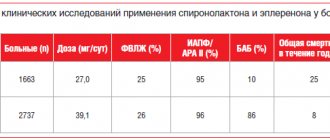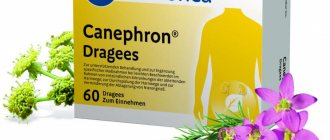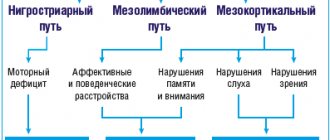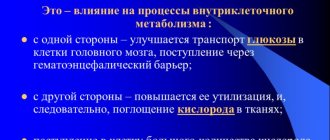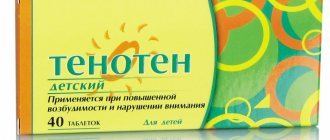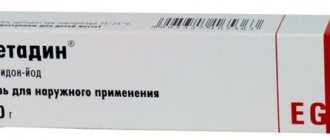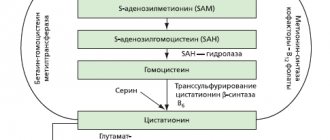HA - hemagglutinin
ARVI - acute respiratory viral infections
PCR - polymerase chain reaction
In the structure of infectious pathology, acute respiratory viral infections (ARVI), including influenza, account for almost 90%. According to WHO, every year up to 100 million people worldwide fall ill with influenza and other acute respiratory viral infections, of which almost 4 million die from their complications [1].
More than 200 types of ARVI pathogens are known [2]. However, influenza occupies a separate position, which is primarily due to the high contagiousness, pathogenicity and variability of the influenza virus. Influenza ranks first among the reasons for hospitalization of patients with ARVI and is the leading cause of death from viral infections [3].
The main strategy to combat influenza, along with vaccination, is the use of antiviral drugs [4, 5]. Data obtained from various clinical studies indicate that the greatest clinical effect of antiviral therapy is achieved when it is started early and is manifested in a reduction in the duration of symptoms, a reduction in the severity of the disease, the risk of complications and deaths [6-14]. Currently, the most widely used neuraminidase inhibitors globally for the treatment of influenza are oseltamivir and zanamivir. Other drugs from this class are registered in Japan: laminamivir, peramivir. In addition, at various stages of clinical study there are drugs for the treatment of influenza that have other proteins that are targets of the influenza virus: favipiravir (a polymerase inhibitor), and drugs whose target is the hemagglutinin (HA) of the influenza virus (nitazoxanide, fludase) [15].
The domestic drug Arbidol (umifenovir) is registered and widely used in Russia. Numerous studies conducted both in the Russian Federation and in a number of foreign countries have shown that umifenovir acts in the early stages of virus reproduction and inhibits the fusion of the viral lipid envelope with intracellular membranes, preventing the virus from entering the cell [16–19]. The virus-specific target of umifenovir action in the influenza virus reproduction cycle is its surface protein HA. Umifenovir interacts with the HA of the influenza virus, increasing its stability to conformational changes induced by low pH, and, as a result, inhibits the fusion of the lipid envelope of the virus with endosome membranes, leading to the release of the viral nucleocapsid and the beginning of transcription of the viral genome [20, 21].
Antiviral activity of umifenovir in vitro
and
in vivo
has been detected against various viruses, in particular influenza viruses, A and B, including seasonal and highly pathogenic subtypes A (H1N1)pdm09 and A (H5N1), a number of other pathogens of acute respiratory viral infections (adenovirus, respiratory syncytial virus, coronavirus, or virus atypical pneumonia - SARS, rhinovirus, parainfluenza virus) [22-25].
A study of the effect of umifenovir on the reproduction of epidemic strains isolated in Russia and resistant to chemotherapy drugs other than umifenovir by the mechanism of virus-specific action showed that the drug inhibits the reproduction of influenza virus strains resistant to both rimantadine and oseltamivir [26, 27].
Mutant strains resistant to umifenovir have so far been obtained only in experiments through multiple (about 15) passages in cell culture in the presence of increasing concentrations of umifenovir. Determination of the nucleotide sequence of umifenovir-resistant mutants showed that resistance to it is caused by mutations in the target protein in the HA2 chain [17]. Despite the fact that umifenovir is widely used in the Russian Federation, umifenovir-resistant strains have not yet been isolated in humans. Studies of more than 1000 clinical isolates isolated in Russia during the 2004–2013 epidemic seasons did not reveal umifenovir-resistant influenza virus strains [26, 28, 29].
Based on the results of many years of clinical studies of therapeutic and prophylactic effectiveness, Arbidol has been approved for use in medical practice in adults as a therapeutic and prophylactic agent for influenza A and B since 1988, and in children since 1995. The effectiveness and safety of Arbidol is also confirmed in numerous studies in the post-registration period [30-46]. However, due to the high variability of influenza viruses, it remains important to obtain modern data on the effectiveness of the drug.
For this purpose, a multicenter, double-blind, placebo-controlled (phase IV) clinical trial ARBITR was initiated, which is aimed at obtaining additional data on the therapeutic efficacy and safety of the drug Arbidol (umifenovir) in patients diagnosed with ARVI or influenza, as well as additional data on the safety and effectiveness use of the drug Arbidol for the prevention of influenza/ARVI among contact persons of the sick person. In total, the study plans to include 850 patients, 500 of them will evaluate the effectiveness of therapy for influenza and other ARVIs, and 350 will evaluate the effectiveness of post-exposure prophylaxis for influenza and other ARVIs.
Materials and methods
This article presents the most significant results that were established during the analysis of interim data obtained in the clinical trial ARBITR.
Patients and methods.
The multicenter post-registration double-blind randomized placebo-controlled clinical trial ARBITR is being conducted at 15 research centers providing outpatient treatment to patients in various regions of the Russian Federation, accredited by the authorized federal executive body in the manner established by the Government of the Russian Federation, in the period from September 22, 2011. until now. The ARBITR study is conducted in accordance with Russian regulatory requirements (Federal Law No. 61 “Law on the Circulation of Medicines” dated April 12, 2010) and the international standard for conducting clinical trials ICH-GCP. The study is conducted on the basis of a permit issued by the Ministry of Health and Social Development of Russia (No. 375 of September 22, 2011).
The study included outpatients aged 18 to 65 years with an uncomplicated form of influenza/ARVI, in whom no more than 36 hours had passed since the onset of the first symptoms, a body temperature of 38 °C or more, and the presence of at least one respiratory symptom (cough, sore throat, symptoms of rhinitis) and symptoms constituting the intoxication syndrome (headache, malaise, muscle pain, sweating and/or chills, weakness). A pregnancy test performed in women before starting treatment must be negative. Patients were not included in the study if they had received an influenza vaccination within the previous 12 months, had an acute chronic disease or HIV infection, received systemic corticosteroids or other drugs that affect the immune system, abused alcohol, or were drug addicts.
The study uses block randomization [47, 48]. Patients with influenza/URI are randomly assigned to one of 2 equal treatment groups: receiving umifenovir therapy or receiving placebo. Patients are randomly assigned to umifenovir (200 mg 4 times daily for 5 days) or placebo, with equal probability of assignment to either group. The study allowed symptomatic therapy, including antipyretic drugs, mucolytics and local vasoconstrictors.
For 19 days, 2 times a day, the severity of 7 main symptoms of ARVI (cough, nasal congestion, sore throat, weakness, headache, muscle pain and chills) was assessed using a 4-point scale (0 - no symptom, 3 - the symptom is very pronounced). In their diaries, patients noted the severity of each of the 7 symptoms and recorded body temperature in the armpit, which they measured with a mercury thermometer 2 times a day. As part of the study, doctor visits were made to the patient on days 1, 3 and 19 (for all patients), and additionally from days 4 to 8 (for patients with laboratory-confirmed influenza). As part of these visits, the doctor recorded the patient's complaints, collected information about adverse events, monitored the patient's filling out the diary and swabs from the mucous membrane of the nasopharynx and oropharynx.
During the work, studies were carried out using polymerase chain reaction (PCR) to verify the pathogen and assess the rate of elimination of the influenza virus. Laboratory verification of the virus using the PCR method was carried out using the following sets of reagents: 1) a set of reagents for detecting RNA of influenza A and influenza B viruses using real-time RT-PCR (GrippKompleks) according to TU 9398-055-46482062-2011, produced by LLC " NPO DNA-Technology”, Russia; 2) a set of reagents for detecting RNA of human ARVI pathogens using real-time RT-PCR (ARI VirusComplex) according to TU 9398−056−46482062—2011, produced by NPO DNA-Technology LLC, Russia.
In accordance with the ARBITR clinical trial protocol, an interim statistical analysis was carried out after including 50% of the planned sample size of study subjects (at least 420 patients/contact persons of the sick person). Processing of data obtained during the clinical trial was carried out in accordance with the instructions of the study organizer, the requirements of the Federal Law of the Russian Federation No. 61-FZ “On the Circulation of Medicines”, GOST R52379-2005 “Good Clinical Practice”.
The purpose of the analysis presented in this article was to evaluate the effectiveness of the drug Arbidol (umifenovir) in patients with influenza. Patients in the group with a diagnosis of influenza were included on the basis of PCR results, and in the absence of a positive PCR analysis - on the basis of the clinical picture of the disease, the correspondence of the date of onset of the disease with information about the epidemic situation on the incidence of influenza in the region, and epidemiological anamnesis data on people with influenza in the family or at the place of work/study. Clinical criteria on the basis of which a patient was assumed to have a diagnosis of influenza were the presence in history or during the period of therapy of at least one episode of increased body temperature above 38 °C in combination with cough and the prevalence at the time of randomization of greater severity of symptoms characterizing intoxication (headache , myalgia, chills, weakness), compared with catarrhal symptoms (cough, sore throat, runny nose/stuffy nose).
Statistical analysis.
Statistical processing of the data obtained during the study was carried out using the statistical software package Statistica 12.0 (StatSoft, USA).
For quantitative indicators, standard descriptive statistics were calculated in the study groups - mean, standard deviation ( SD
), median (Me), interquartile range (Q1; Q3), for qualitative indicators - frequency characteristics of characteristics in the study groups.
For intergroup comparisons of quantitative indicators, t
test for independent samples and its nonparametric analogue,
the Mann-Whitney U To compare two samples according to the frequency of detection of the event under study, the multifunctional Fisher ϕ test (Fisher angular transformation) was used [49].
When using statistical procedures, intra- and intergroup differences were considered statistically significant at p
≤0,05.
Each patient was compared with a vector of 38 values of the severity of the main symptoms (cough, sore throat, runny nose, headache, weakness, myalgia, chills) in points (from 0 to 3) and in degrees Celsius for the symptom “body temperature”.
The following criteria for the effectiveness of therapy were assessed.
1. The severity of the symptom/syndrome and the severity of the disease. To assess the severity of symptoms, syndromes (catarrhal and intoxication) or the severity of the disease, the overall median value for this indicator was calculated. The proportion of patients in the main and control groups with milder symptoms was defined as the number of patients with symptom severity less than the overall median value at each time point in the observed period. This indicator was assessed during the first 3 days from the start of therapy, i.e., at the time when the clinical manifestations of influenza are most pronounced and the effect of therapy on the severity is most significant for the patient.
2. Time until all symptoms of the disease resolve. Defined as the period from the start of therapy until the moment when the severity for each of the 7 main symptoms simultaneously turned out to be minimal, i.e. 1 point or less, and the body temperature was less than 37.2 ° C while maintaining this level of severity of symptoms and body temperature over the next 24 hours. The proportion of patients who, within a certain period of time from the start of therapy, experienced a decrease in the severity of all symptoms to the minimum clinically significant level was calculated.
3. The rate of elimination of the influenza virus. When assessing the rate of virus elimination, the duration of the period until the moment of virus elimination and the proportion of patients in whom virus elimination occurred on the 4th day from the start of therapy were calculated.
Lost Resolution
Not long ago, Russian-language media and social networks were making noise about the Memorandum on the pseudoscience of homeopathy, which was developed by the Commission for Combating Pseudoscience and Falsification of Scientific Research under the Presidium of the Russian Academy of Sciences. Its authors ask the Ministry of Health to “reconsider, in the light of current scientific data, decisions taken more than 20 years ago without sufficient grounds to introduce homeopathy into the Russian healthcare system” and “to withdraw homeopathic medicines from medical use in state and municipal medical institutions.” Facebook disputes revealed many hidden lovers of homeopathy and quarreled many good friends.
However, few people remember that ten years ago, in March 2007, a similar document was drawn up at the Academy of Medical Sciences (RAMS). The resolution of the meeting of the Presidium of the Formulary Committee of the Russian Academy of Medical Sciences dated March 16, 2007 stated: “The Formulary Committee of the Russian Academy of Medical Sciences, supporting the need for emergency measures taken by the Government of the Russian Federation to normalize the situation with drug supply to the population of the country, and realizing its involvement in the problem of drug supply, proposes:
results
By September 2014, a total of 448 patients from 15 research centers of the Russian Federation were included in the study: Yekaterinburg (62 patients, 36 contact persons), St. Petersburg (60 patients, 27 contact persons), Perm (40 patients, 4 contact persons ), Chelyabinsk (33 patients, 33 contact persons), Ryazan (27 patients, 16 contact persons), Arkhangelsk (21 patient, 20 contact persons), Novosibirsk (16 patients, 13 contact persons), Yaroslavl (14 patients, 2 contact persons ), Saratov (9 patients, 4 contact persons), Kazan (8 patients), Ufa (3 patients). Of the 448 patients, 293 were included in the therapy group.
To assess the effectiveness of umifenovir in the treatment of influenza, the analysis of interim data obtained in the clinical trial ARBITR included 119 patients with proven disease caused by the influenza virus ( n
=45) or suspected (based on the clinical picture) (
n
=74). The distribution of patients into groups, the demographic characteristics of patients and the clinical picture of the disease at the time of inclusion in the study are presented in Table. 1. At the time of inclusion in the study, there were no significant differences between the main and control groups in these parameters.
Table 1. Characteristics of patients with influenza at the time of inclusion in the study.
Effect of umifenovir on the severity of the disease.
During therapy with umifenovir, patients with influenza experienced rapid relief of the disease in a greater number of cases (Fig. 1).
Already by the end of the first day from the start of therapy, the number of patients with a milder course of the disease in the main group was 35% higher than the same indicator in the control group ( p
<0.001) and these differences persisted during the next day of therapy.
Less severity of the disease in a larger number of patients with influenza in the main group was achieved mainly due to the effect of umifenovir therapy on the severity of intoxication syndrome and, to a lesser extent, manifestations of catarrhal syndrome (Table 2). The effect of umifenovir on the severity of the disease in general and the clinical manifestations of symptoms characterizing the severity of intoxication is most pronounced in the group of patients with laboratory confirmed influenza (Table 3). In the absence of significant differences in the severity of the disease and the severity of the main symptoms and syndromes at the time of initiation of therapy, already 36 hours after the start of treatment, the number of patients who had a milder course of the disease in the main group was 37.5% more than in the control group ( p
<0.05).
For other indicators, a similar picture was observed: after 36 hours from the start of therapy, the number of patients with less severe headache was by 21% ( p
<0.05), chills - by 42% (
p
<0.05), fever - by 46 % and intoxication syndrome - by 30% (
p
<0.1) (see Table 3; Fig. 2).
Table 2. Disease severity during umifenovir therapy in patients with influenza
Table 3. Severity of the disease and severity of symptoms of intoxication in patients with laboratory confirmed influenza
Rice. 1. Dynamics of the severity of the disease in patients with influenza (the number of patients with a mild course of the disease).
Rice.
2. The number of patients with laboratory-confirmed influenza who, 36 hours after the start of therapy, had a mild course of the disease and mild severity of the main symptoms of intoxication. Effect of umifenovir on the time to resolution of all symptoms.
During therapy with umifenovir, patients with influenza experienced a faster resolution of all symptoms, which is especially noticeable in the first 5 days from the start of therapy, i.e., during the period of drug therapy.
In the main group, the number of patients who showed resolution of all flu symptoms exceeded the same indicator in the placebo group by 3.7, 3.4 and 1.8 times after 48, 60 and 72 hours from the start of therapy, respectively (Fig. 3 ). The difference between the groups is most pronounced in patients with laboratory-confirmed influenza, in whom, during therapy with umifenovir, this indicator after 60 hours from the start of therapy exceeded that in the placebo group by 5.7 times, and after 72 and 84 hours - by 3.2 times ( p
<0.05) (Fig. 4).
In addition, there was a significant effect of umifenovir therapy on the duration of the period of resolution of all symptoms that make up the intoxication syndrome (headache, myalgia, chills, weakness, fever), the differences between the main and control groups were 14.6 hours ( p
<0.05).
Rice. 3. Duration of manifestation of the main symptoms of the acute period in patients with influenza (with laboratory confirmed influenza and patients with a clinical diagnosis of influenza, i.e. with negative PCR results).
Rice.
4. Duration of manifestation of the main symptoms of the acute period in patients with laboratory-confirmed influenza, A and B. The effect of umifenovir on the rate of elimination of the influenza virus.
In patients with influenza treated with umifenovir, there was a reduction in the period of detection of influenza virus RNA compared to that in patients in the control group by 17 hours (84.4 and 103.4 hours;
p
= 0.232).
When analyzing the data separately by the seasons 2011-2012, 2012-2013 and 2013-2014, during which the study was conducted, it was found that significant differences in the rate of virus elimination in the main and control groups were obtained for patients included in the study during the seasons 2011-2012 and 2012-2013, and the difference in the duration of periods of detection of influenza virus RNA between the main and control groups in these seasons was 44 hours (88 and 132 hours; p
<0.05).
In addition, it was found that during therapy with umifenovir, there is an increase in the number of patients in whom elimination of the influenza virus was achieved by the 4th day from the start of treatment (Table 4). Thus, the influenza virus was not detected on the 4th day from the start of therapy in 75% of patients in the main group and in 47% of the control group ( p
<0.05).
For patients included in the study during the 2011–2012 and 2012–2013 seasons, these differences between the study and control groups were 72.7 and 18.2%, respectively ( p
<0.01).
Table 4. Time frame for elimination of influenza virus during umifenovir therapy
Complications of influenza were observed in 3.2% of patients in the main group (2 cases of bacterial bronchitis) and in 7% of patients in the control group (2 cases of sinusitis, one case of bacterial bronchitis and one case of pneumonia).
The therapy was well tolerated. The incidence of side effects in the main group was 6.5%, in the control group - 12.3%.
Arbidol dosage
Inside, before meals.
Add 30 ml (or approximately 2/3 of the bottle volume) of boiled water and cooled to room temperature to the bottle containing the powder. Close the bottle with a lid, turn it upside down and shake thoroughly until a homogeneous suspension is obtained. Add boiled and cooled water to a volume of 100 ml (up to the mark on the bottle) and shake again. Before each dose, shake the contents of the bottle thoroughly until a homogeneous suspension is obtained. Measure a single dose using the included measuring spoon.
For nonspecific prevention of SARS (in contact with a patient) in children over 6 years of age and adults:
- children from 6 to 12 years old - 20 ml (100 mg).
- children over 12 years of age and adults - 40 ml (200 mg) 1 time / day for 12-14 days.
For the treatment of SARS in children over 12 years of age and adults:
- children over 12 years of age and adults - 40 ml (200 mg) 2 times a day for 8-10 days.
Discussion
It is known that the severity of symptoms correlates with the degree of viral load, regardless of the subtype of influenza virus that causes the disease [50, 51]. Therefore, the use of drugs that suppress the replication of the influenza virus reduces not only the duration, but also the severity of symptoms and the severity of the infectious disease. This observation is also confirmed by the data we obtained in the ARBITR clinical trial. A significant effect of umifenovir on the rate of virus elimination was established, which, in particular, was manifested by a decrease in the proportion of patients in whom detection of viral RNA persisted for 4 days or more. In addition, these data, along with numerous studies on the mechanism of action of the drug, indicate a direct virus-specific effect of umifenovir. Currently, this fact is reflected in the WHO assignment of the international code ATC to umifenovir as a drug of direct antiviral action [52].
The use of the drug umifenovir in our study in patients with influenza alleviated the severity of the disease and reduced the severity of catarrhal and intoxication syndromes. This was most clearly observed during the first 2-3 days from the start of therapy, during the height of the disease, when the influence on the severity of the course and severity of symptoms is one of the most important tasks of antiviral therapy. It has been proven that the use of umifenovir in patients with influenza (including patients with laboratory-confirmed influenza) leads to a more rapid resolution of all symptoms in most cases during the acute period of the disease.
The data obtained are extremely important in understanding the features of the clinical use of the drug Arbidol (umifenovir) in everyday medical practice, objective assessment of the antiviral effect, impact on the course of the disease, as well as the safety of taking the drug. The collection and assessment of such data is necessary in the practice of post-registration use of the drug and will help to better understand what dynamics of the course of the disease can be expected in patients receiving a course of etiotropic antiviral therapy in the context of the spread of modern strains of influenza viruses and other acute respiratory viral infections.
The special path of Russian medicines
For several years now, Arbidol has remained one of the best-selling antiviral drugs in Russia.
It is even more popular than means to increase potency. If you believe the instructions for the medicine, in 2012 the citizens of our country bought 5 billion rubles worth of packages of it. Its active ingredient, umifenovir, was synthesized by Soviet pharmacologists from the All-Union Scientific Research Chemical and Pharmaceutical Institute named after. Sergo Ordzhonikidze (now JSC TsKhLS-VNIHFI in Moscow) and several other scientific institutes in 1974. They began selling it as a medicine in 1988. Despite such a venerable age of the drug, its effectiveness was tested only in the USSR and China.
Our country is different from others in many ways. Unfortunately, these meanings are not always positive. In the case of drugs, the fact is that we have little control over which drugs go onto the market. If in the USA the Food and Drug Administration carefully monitors what drugs enter the market, then in our country even experts cannot figure out what rules are used to register drugs. In Russia, unlike other countries, most medications are sold without a prescription. And there are a huge number of drugs whose effectiveness has not been really tested. These drugs include Arbidol.
According to modern rules of drug development, you first need to understand how a molecule of a potential active substance behaves “in a test tube”, with what it reacts and with what it does not. Then you need to test its effect on cell cultures. The next stage is animals. Typically mice and rats are used first, followed by non-human apes such as macaques. Animals are tested to see what maximum dose of a potential drug the body can tolerate, whether it is toxic in small doses, and what side effects it produces.
If a substance passes preclinical trials, clinical trials await it, this time on humans. Healthy volunteers use the potential drug for a period of time to further test it for possible side effects. In addition, the substance is given to hundreds of patients and they see how effectively it copes with the disease compared to a “dummy” placebo. If a potential drug turns out to be effective and safe enough for people, its developers can expect their brainchild to appear in pharmacies. And even after the start of sales of the drug, it continues to be tested in so-called post-marketing studies. People who have taken a new drug can report its effects, both good and bad, to the manufacturer.
In the case of Arbidol, everything happens, essentially, in the reverse order. Although it is the best-selling antiviral drug in the world's largest country, nothing concrete is known about the effectiveness of this drug. On the main page of the website dedicated to Arbidol, it is written in large letters: “The World Health Organization has included Arbidol in the list of drugs that have a direct antiviral effect.”
Under this inscription there is a link to the WHO website, where it supposedly says so. In fact, it turns out that the meaning of the WHO’s action was somewhat different. Umifenovir was assigned a separate code in the international drug classification ATX. This system exists to make it easier to collect information about the use of various drugs. Just because a substance has the code ATX does not mean it has been proven to be effective or safe. In essence, listing a drug in ATX is an acknowledgment that it exists and is used, nothing more.
Well, a search for articles on clinical trials of umifenovir in the largest database of scientific articles on medicine PubMed produces unintelligible results. In fact, in less than 30 years of sales of Arbidol, it was “checked for lice” only twice, and once in China. An article about this was published in Chinese. The second study is currently being conducted in Russia, and its final results are not yet known. About him - a little lower.
But in the last two years, several publications by foreign scientists have appeared, which finally reveal the potential mechanism of action of umifenovir. Generally speaking, it was necessary to start with such research, and not somewhere overseas, but here, because our compatriots developed this drug.
Restrictions on use
The medicine is not recommended if you have an allergic reaction to umifenovir. The drug should not be prescribed to patients under 2 years of age. It is prohibited to use an antiviral agent during pregnancy in the first trimester. The drug is not recommended during lactation.
You should not take the medication if:
- Lactase deficiency;
- Malabsorption syndrome.
Take the medication carefully in the 2nd and 3rd trimesters of pregnancy.
When should you use the medication?
The drug is recommended to combat viral infections. It is recommended to prescribe the medication when rotavirus enters the digestive tract. In this case, Arbidol is used as part of the main treatment. It is acceptable to use the drug to eliminate herpetic eruptions (herpes simplex).
The drug is indicated after surgery. This helps prevent complications and improve overall immunity.
The drug is indicated as a systemic antiviral agent. It is taken simultaneously with symptomatic therapy (medicines for fever, cough and other drugs).
